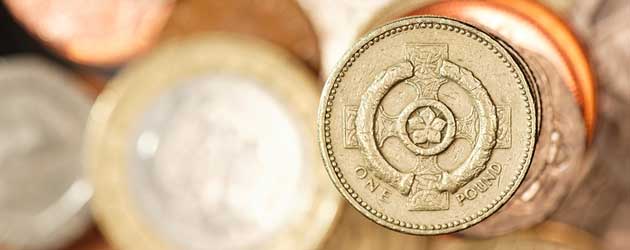
The Pound to US Dollar exchange rate (GBP/USD) rose to a near-1-month high yesterday of 1.5414 as UK Service Sector data printed stronger-than-expected and US Employment Change data failed to convince investors that the Federal Reserve is about to slowdown its asset purchasing programme.
The UK Service Industry, which makes up around 70% of British Gross Domestic Product, climbed to a yearly high PMI score of 54.9 during May. The surprisingly robust figure smashed economists’ expectations of 53.1 and reflected significantly well on the UK economy’s performance so far in the second quarter. Alongside Monday’s 51.3 Manufacturing PMI score and Tuesday’s 50.8 Construction PMI print, yesterday’s optimistic Service Sector report formed a holy trinity of encouraging UK economic indicators.
Chris Williamson of Markit Economics, who compiled the report said the British economy had:
“Moved up a gear…for the first time in a year, Manufacturing, Services and Construction Sectors are all now reporting higher levels of activity”.
Jens Larsen of RBC Capital Markets stated that the Bank of England’s ultra-loose monetary policy, the stabilization in the Eurozone and a slight drop-off in CPI inflation had allowed economic sentiment to improve in Great Britain:
“Most importantly, expectations [switched to the perspective] that the worst is behind us, even if the present is not all that nice”.
The pronounced jump in value of the Pound was also influenced by speculation that the recent run of good results could persuade the BoE to hold back on further quantitative easing. Malcolm Barr of JPMorgan stated that: “the move up in the PMI surveys is enough for us to change [the] call” that the BoE will introduce another £25 billion of asset purchasing in the near future.
Sterling’s 1-cent gains against the US Dollar (GBP/USD) were also helped by a weaker-than-expected US ADP Employment Change figure of 135,000, which was interpreted as dovish for the Fed. With the labour market appearing to have cooled down slightly during May, it is unlikely that the Federal Reserve will opt to taper asset purchases just yet. Friday’s important Non-farm Payrolls report should prove illuminating: a strong reading could boost QE3 slowdown bets and therefore bolster demand for the ‘Greenback’, whilst a below-par reading could confirm the view that asset purchases will remain at $85 a month during the next few months and this would probably lead to further GBP/USD gains.
The Pound appreciated against all of its major currency rivals yesterday and Sterling rose by around 3.4 cents against the Australian Dollar to a 20-month high of 1.6245 (GBP/AUD) as subdued GDP growth and dovish Central Bank tendencies continued to weigh over the Antipodean currency.
Sterling also put in a stellar performance against the New Zealand Dollar, improving by around 3 cents to a 6-month high of 1.9428 (GBP/NZD). The Pound to Euro exchange rate (GBP/EUR) strengthened by 0.6 cents to reach a fortnightly high of 1.1776 and the Pound to Canadian Dollar exchange rate (GBP/CAD) hit a 6-month high of 1.5973 after increasing by around a cent.

Comments are closed.